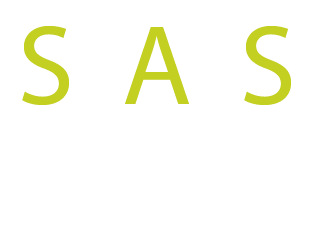Our Letter to Council About Paid Parking
You can fill in the survey here https://letstalksquamish.ca/parking-management , and if you want to expand on your thoughts or any of ours then email Squamish council at council@squamish.ca
Dear Council members,
I am writing to you as the Chair of the Squamish Access Society (SAS) to express our concerns regarding the proposal to introduce paid parking in 2025 at what have been termed “tourism-based locations”. The proposed locations include key climbing areas like the Smoke Bluffs, and the crags accessed from Darrell Bay including the Papoose and Shannon Falls. These places are cherished by climbers and many other Squamish residents who enjoy spending time outdoors. Access to outdoor recreation is an intrinsic part of Squamish’s identity and a key value for many residents. Climbers were instrumental in the preservation of the Smoke Bluffs and its designation as a municipal park and it is important to us that all residents are able to freely enjoy it.
The framing of this proposal as “tourism-based destination parking” raises significant issues. Climbing areas such as the Smoke Bluffs are not merely tourist attractions – they are our local parks. One of the stated aims of paid parking is to generate revenue from visitors to the community. As proposed, much of this revenue will be taken from Squamish residents who already contribute through municipal taxes. The Smoke Bluffs, in particular, exist because climbers dedicated time, effort and expense to purchase and protect this urban outdoor area, making it accessible for all residents to enjoy. Implementing paid parking at such sites disregards this history and underestimates the essential role these areas play in our local outdoor culture.
The cost of paid parking will disproportionately impact local residents. Notably, there has been no mention of a seasonal pass or discounted rates for locals or seniors. It is unclear whether this was overlooked or deliberately not included. While the suggestion to charge only during peak seasons may seem like a compromise, the proposed peak season is excessively long, reducing the effectiveness of this measure. Additionally, there is a troubling lack of details regarding the projected financial benefit to the district after the costs of implementing and managing the program. Since the program will be contracted out, it remains unclear how much of the generated revenue will directly benefit the municipality. Has any analysis been completed? We are also concerned that contracting it out may also reduce the District’s capacity to change rates or adjust the program based on resident feedback.
Access to these parks by public transit remains a challenge. Currently, there are limited transportation options, and climbers and outdoor enthusiasts often have little choice but to drive. A climber traveling from Brackendale or Valleycliffe to the Smoke Bluffs could face a journey of over an hour, involving a bus ride and a lengthy walk, or multiple bus transfers. Climbing areas near Darrell Bay are even less accessible by transit, with limited summer bus service and no straightforward cycling routes.
Another pressing concern is the potential for increased pressure on nearby residential areas and businesses. For instance, neighbourhoods such as Hospital Hill may experience overflow parking as park visitors seek free alternatives. This could lead to further congestion and frustration among residents and additional enforcement expenses for the DOS. The Smoke Bluffs Parking lot was originally established to deal with this pressure on residential parking. Similarly, businesses like the Sea to Sky Gondola may face unintended consequences if annual passholders accessing adjacent parks shift their parking to these areas.
The Adventure Centre parking lot also stands to be affected by this proposal. This lot is an essential transportation hub, serving as a park-and-ride location that supports shuttle services to nearby parks. The SAS views the Adventure Centre as a critical asset, not only as a transportation hub, but for engaging visitors and directing them to other local attractions and services. Implementing paid parking at this location could undermine its value and disrupt the flow of tourism.
Council was presented with the option to prioritize parking at either outdoor recreation areas or the downtown core. The background studies provided strong arguments for paid parking downtown, where parking demand and turnover are higher and public transit options are more viable. However, the rationale for introducing paid parking at outdoor recreation areas appears less robust. We are concerned it is being prioritised because it is less contentious. As one councillor noted, using climbing areas as a “pilot study” for paid parking is flawed.
Visitor behavior differs significantly between downtown areas and climbing destinations. Climbers often park for several hours, whereas downtown visitors may stay for less than an hour while running errands or attending appointments, so climbers will be disproportionately affected.
We urge the council to reconsider this proposal and seek alternatives that better reflect the needs and values of the community. As it stands the implementation of paid parking will disproportionately impact residents and limit access to the outdoors.
Thank you for your time and consideration.
Sincerely,
Alex Ryan Tucker
Chair, Squamish Access Society
